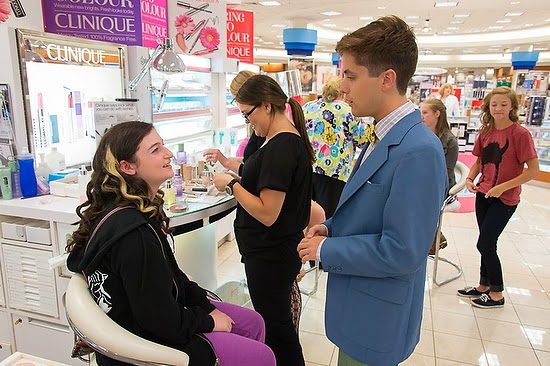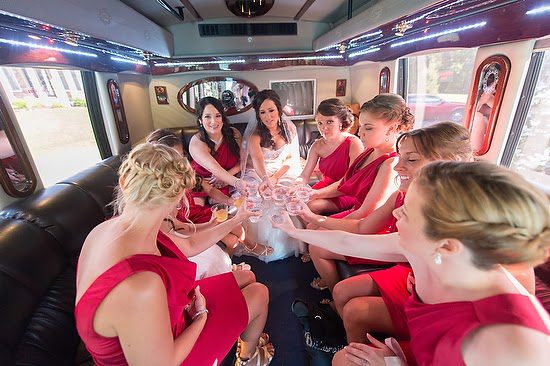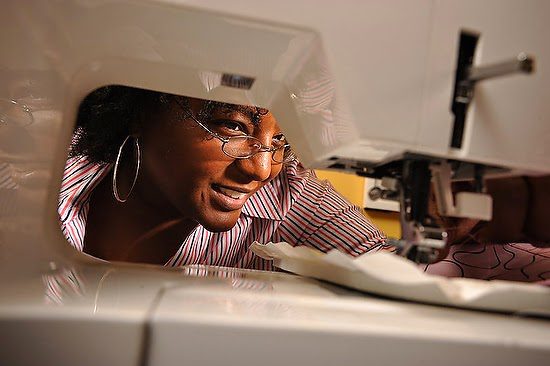| Stanley was invited into the subject’s home to get this intimate photo of her sewing. |
The Creepy Photographer
There are two types of “Creepy Photographers”: Intentional and unintentional.
Intentional Creepy Photographer
• The photos they take are for their personal use rather than public consumption
• They objectify their subject
• Use photography as way to use people for personal benefit
• Often lack empathy for their subjects
• Hypersensitive to criticism
• Impulsive
• Envious and competitive
• Amoral/Conscienceless
• Feel entitled
Unintentional Creepy Photographer
• Take photos for their personal use rather than public consumption
• Lacking social-skills
• Fail to connect with subject
• Shoot without ever getting permission
• Failure to pick up on cues from people
• Cannot bring themselves to introduce themselves to subjects
• Take photos without a purpose
 |
| Photo of Stanley talking with a subject before he photographs them. Photo by Ken Touchton |
How not to be that Creepy Photographer
I really can’t help the genuinely creepy photographer. They tend to be true narcissists. If you’re like me, you get into disputes with narcissists over their casual dishonesty and cruelty to others. Trying to reform narcissists by reasoning with them or appealing to their better nature is about as effective as spitting in the ocean. What you see is what you get: they have no better character. The fundamental problem here is that narcissists lack empathy.
Here is a list of tips for the unintentionally creepy photographer that I think will help you be likable or even a loveable photographer.
• Introduce yourself as much as possible. A small conversation introducing you is the best but even using body language to ask permission to photograph someone will get better results.
• Photograph with the purpose and intention to share your photos with others. If this is a hobby then create an online gallery where you can share this with the subjects and those that you are targeting as your audience.
• Become a blogger. Share your photos and thoughts with the world. You may end up with a theme or subject that is the dominant overtime.
• Carry business cards. Even as an amateur photographer having a card with your name and contact information will help you open up doors. I recommend having a website, blog, email and phone number to share with the subjects.
• Eye contact is very important. Be sure you look people in the eye and hold that eye contact not just when you talk but when you listen.
• Smile a lot. A genuine smile and not a fake smile. Show the people you are excited to meet them and enjoy what you do.
• Speak enthusiastically with people. Tell them why you think they make a great subject and how much you enjoy meeting them.
• Share your photos with them. If you give them your business card they can contact you and you can easily send them a photo or two that they could enjoy. Emailing a photo is one of the best ways to celebrate and thank them.
While many people will give you tips on how to shoot “street photography” without ever having to ask permission or introduce yourself to a subject, I can tell you from personal experience those photos often pale to the pictures where the photographer has taken the time to introduce themselves and tried to get to know the subject.
 |
| I was behind the scenes of a fashion show where the models were able to meet “Pip,” season 2 of the hit TV Show The Voice finalist. |
Invitation Only
The best parties I like to attend are where there is some exclusivity. These are usually invitation-only parties where the hostess takes care of you. Weddings are a great example of where the family invites their closest friends to celebrate with them.
One of the best parts of the wedding is sharing stories and friends and remembering the growth of a relationship. I enjoy seeing the coming together of two sets of friends and family from the groom’s side and the bride’s side getting to know each other.
 |
| Stanley is inside the stretch limo photographing the bride and bridesmaids in a toast on the way to the wedding. |
It’s cool to be invited into people’s lives and see how they live, work and play. In his book Permission Marketing: Turning Strangers Into Friends And Friends Into Customers, Seth Godin talks about getting permission from people.
“Real permission is different from presumed or legalistic permission. Permission is like dating. You don’t start by asking for the sale at first impression. You earn the right, over time, bit by bit.”
While Godin is talking about marketing, this applies to photographing people just as much.
Over time people if you stop showing up, people complain, and they ask where you went. When you know you are not a creepy photographer, people want you back in their lives.

